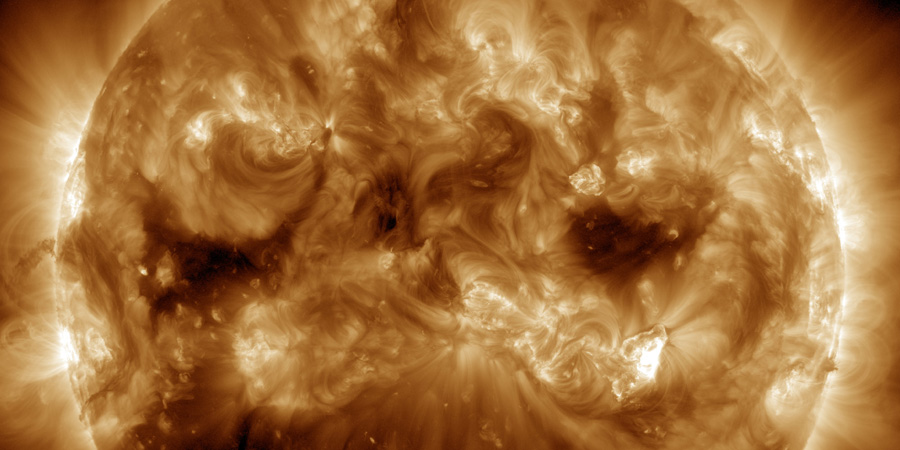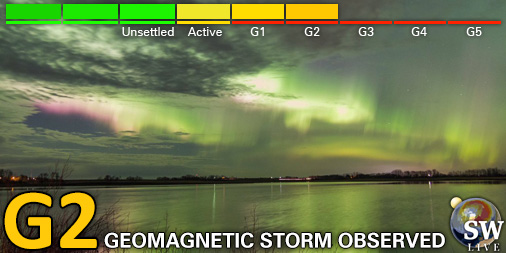Viewing archive of Tuesday, 18 February 2003
Solar activity report
Prepared by the NOAA © SWPC and processed by SpaceWeatherLive.com
Joint USAF/NOAA Report of Solar and Geophysical Activity
SDF Number 049 Issued at 2200Z on 18 Feb 2003IA. Analysis of Solar Active Regions and Activity from 17-2100Z to 18-2100Z
IB. Solar Activity Forecast
IIA. Geophysical Activity Summary 17-2100Z to 18-2100Z
IIB. Geophysical Activity Forecast
III. Event Probabilities 19 Feb to 21 Feb
| Class M | 05% | 05% | 05% |
| Class X | 01% | 01% | 01% |
| Proton | 01% | 01% | 01% |
| PCAF | green | ||
IV. Penticton 10.7 cm Flux
Observed 18 Feb 110 Predicted 19 Feb-21 Feb 110/110/105 90 Day Mean 18 Feb 146
V. Geomagnetic A Indices
Observed Afr/Ap 17 Feb 008/011 Estimated Afr/Ap 18 Feb 018/020 Predicted Afr/Ap 19 Feb-21 Feb 015/020-015/015-012/015
VI. Geomagnetic Activity Probabilities 19 Feb to 21 Feb
| A. Middle Latitudes | |||
|---|---|---|---|
| Active | 30% | 25% | 20% |
| Minor storm | 15% | 10% | 10% |
| Major-severe storm | 10% | 05% | 05% |
| B. High Latitudes | |||
|---|---|---|---|
| Active | 40% | 30% | 25% |
| Minor storm | 30% | 25% | 20% |
| Major-severe storm | 15% | 10% | 10% |
All times in UTC
Current data suggests there is a slight possibility for aurora to appear at the following high latitude regions in the near future
Iqaluit, NUNuuk
Tórshavn
Oulu, Rovaniemi, Sodankylä, Utsjoki
Reykjavik
Kirkenes, Tromsø, Trondheim
Arkhangelsk, Murmansk
Kiruna, Luleå, Umeå
Latest news
Latest forum messages
Support SpaceWeatherLive.com!
A lot of people come to SpaceWeatherLive to follow the Sun's activity or if there is aurora to be seen, but with more traffic comes higher server costs. Consider a donation if you enjoy SpaceWeatherLive so we can keep the website online!

Latest alerts
Saturday, 22 March 2025
23:45 UTC - Geomagnetic activity
Minor G1 geomagnetic storm (Kp5) Threshold Reached: 23:37 UTC
Strong G3 geomagnetic storm watch for 23 March
Yesterday around 16 UTC an M1.2 solar flare took place around sunspot region 4028. The solar flare triggered a filament eruption which erupted from the center of the earth-facing solar disk.
Read more12:18 UTC - Hemispheric Power Index
The OVATION model predicts the Hemispheric Power Index to reach 75GW at 13:10 UTC
03:45 UTC - Geomagnetic activity
Minor G1 geomagnetic storm (Kp5) Threshold Reached: 03:35 UTC
03:15 UTC - Geomagnetic activity
Moderate G2 geomagnetic storm (Kp6) Threshold Reached: 02:59 UTC
Space weather facts
| Last X-flare | 2025/02/23 | X2.0 |
| Last M-flare | 2025/03/21 | M1.2 |
| Last geomagnetic storm | 2025/03/21 | Kp5+ (G1) |
| Spotless days | |
|---|---|
| Last spotless day | 2022/06/08 |
| Monthly mean Sunspot Number | |
|---|---|
| February 2025 | 154.6 +17.6 |
| March 2025 | 140.3 -14.3 |
| Last 30 days | 140 -11.7 |






